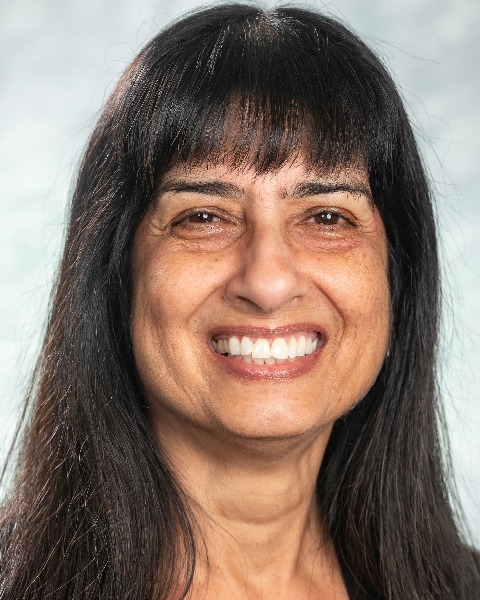Legal, Ethical, and Professional Issues (LEPI)
MM207 - Health Literacy in U. S. Audiology Clinics: Are We Short-Changing our Hispanics Patients?

Zarin Mehta, PhD
Associate Professor
A. T. Still University
A. T. Still University
Mesa, ArizonaDisclosure(s): No financial or nonfinancial relationships to disclose.
.jpg)
Tania A. Vega
Student Doctor of Audiology
A.T. Still University
Moreno Valley, CaliforniaDisclosure(s): No financial or nonfinancial relationships to disclose.
Lead Presenter(s)
Presenter(s)
Health literacy is a multifaceted concept that is a shared responsibility between patients and healthcare organizations. It plays a critical factor in patient care; it allows patients to understand health information, navigate healthcare systems, and make informed decisions. According to 2020 Census data, there are 63 million Hispanic people living in the U. S., with Hispanic adults experiencing the lowest average health literacy, posing a significant health accessibility challenge. This presentation aims to exemplify these challenges for Hispanic patients through three case studies, and provide recommendations to improve both organizational and patient health literacy in audiology clinics.
Summary:
“Health literacy is not only a characteristic of an individual, but also the responsibility of organizations to make health information accessible to their intended audience” (Bader, et al, 2022, pp. 2).
Health literacy is a critical factor in patient care. It is the ability to understand/interpret health information, navigate the health-care system, and make informed healthcare decisions (Zaidman et al., 2023). Low health literacy is associated with poorer health knowledge, increased chronic illness, underutilization of preventative health services, and increased hospitalizations (Zaidman et al., 2023). Risk factors for low health literacy include, lower education levels (< high school), older age (65+ years), lower socioeconomic level, immigrants with English as a second language, and residential zip code (Christy, et al., 2021).
Hispanic adults have the lowest average health literacy scores in the U. S. (Rooney et al., 2021). According to 2020 Census data (Jones et al, 2021), there are 63 million Hispanic people living in the U. S., therefore, understanding their specific needs is crucial. 71% of Hispanics in the U. S. speak a language other than English at home; 28.4% report not being fluent English-speakers (Office of Minority Health, n.d.). Written materials in audiology clinics are often written at a college level while average reading levels in the Hispanic community are at a 4th-grade level (Rooney et al., 2021), posing a significant accessibility challenge. The Spanish language varies greatly between countries/regions. Therefore, even when medical interpreters are available, language barriers may persist. Further, parental, especially maternal health literacy, has a strong impact on overall health, educational, psychosocial, and economic outcomes for children with communication disorders (Zaidman et al., 2023).
This presentation will raise awareness of the less-than-ideal experiences of the Hispanic population in audiology practices and discuss health literacy resources required to improve services, including appropriate medical interpretation. Three case studies will be presented to exemplify this discussion:
Case 1: A 61-year-old woman who did not speak English. She reported constant bilateral middle ear infections. Myringotomy was recommended but no professional in the clinic could explain the procedure to her or determine the etiology of the chronic ear infections. The patient’s problem of chronic otitis media, atypical for an adult, remained unresolved.
Case 2: An eight-year-old boy who failed a school hearing screening. He was accompanied to the appointment by both parents; only dad spoke English, but barely. Hearing aids were fitted with minimal informational counseling. The post-fit appointment was silent; no questions were asked by the family and no information was provided by the audiologist.
Case 3: A 57-year-old man with hearing loss who did not speak English; his adult daughter interpreted. He was fit with hearing aids. On the post-fit appointment, patient had multiple concerns that the daughter could not adequately explain to the audiologist. The patient returned the hearing aids.
Was optimal audiologic care provided to these patients? What could have been done differently? Options/recommendations will be discussed to improve both organizational and patient health literacy and services in audiology clinics for Hispanic patients.
Learning Objectives:
- Upon completion participants will be able to define health literacy and identify it as a multifaceted skill that involves the ability to understand health information and make informed medical decisions.
- Upon completion participants will be able to identify the adverse effects of low health literacy within the Hispanic population, such as underutilization of preventative health services and higher hospitalizations.
- Upon completion participants will be able to apply strategies to improve organizational and patient health literacy among Hispanic patients in audiology clinics.

